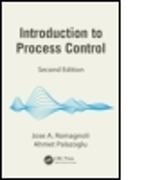Read more
Zusatztext This book contains the essential material for a first course on process control at an elementary level and I highly recommend it to instructors who [teach this] course at this level.-Mehmet C. Camurdan! Bogaziçi University! Turkey Informationen zum Autor Jose A. Romagnoli holds the Cain Chair in Process Systems Engineering in the Department of Chemical Engineering and is the director of the Laboratory for Process Systems Engineering at Louisiana State University. He earned a PhD in chemical engineering from the University of Minnesota. Dr. Romagnoli has authored more than 300 international publications and was awarded the Centenary Medal of Australia for his contributions to chemical engineering. His research covers all aspects of process systems engineering! including data processing and reconciliation! modeling of complex systems! advanced model-based control! intelligent process monitoring and supervision! and plant-wide optimization.Ahmet Palazoglu is a professor of chemical engineering and materials science at the University of California! Davis. He earned a PhD in chemical engineering from Rensselaer Polytechnic Institute. Dr. Palazoglu has authored more than 150 publications and has taught short courses to academic and industrial audiences on process monitoring applications. His research interests include process control! nonlinear dynamics! process monitoring! and statistical modeling. Klappentext Introduction to Process Control! Second Edition provides a bridge between the traditional view of process control and the current! expanded role by blending conventional topics with a broader perspective of more integrated process operation! control! and information systems. Updating and expanding the content of its predecessor! this second edition addresses issues in today's teaching of process control.Teaching & Learning Principles * Presents a concept first followed by an example! allowing students to grasp theoretical concepts in a practical manner * Uses the same problem in each chapter! culminating in a complete control design strategy * Includes 50 percent more exercises Content * Defines the traditional and expanded roles of process control in modern manufacturing * Introduces the link between process optimization and process control (optimizing control)! including the effect of disturbances on the optimal plant operation! the concepts of steady-state and dynamic backoff as ways to quantify the economic benefits of control! and how to determine an optimal transition policy during a planned production change * Incorporates an introduction to the modern architectures of industrial computer control systems with real case studies and applications to pilot-scale operations * Discusses the expanded role of process control in modern manufacturing! including model-centric technologies and integrated control systems * Integrates data processing/reconciliation and intelligent monitoring in the overall control system architecture Web Resource The book's website offers a user-friendly software environment for interactively studying the examples in the text.The site contains the MATLAB(R) toolboxes for process control education as well as the main simulation examples from the book. Access the site through the authors' websites at www.pseonline.net and www.chms.ucdavis.edu/research/web/pse/ahmet/ Drawing on the authors' combined 50 years of teaching experiences! this classroom-tested text is designed for chemical engineering students but is also suitable for industrial practitioners who need to understand key concepts of process control and how to implement them. The authors help readers see how traditional process control has evolved into an integrated operational environment used to run modern manufacturing facilities. Zusammenfassung Introduction to Process Control! Second Edition provides a bridge between the traditional view of process co...

